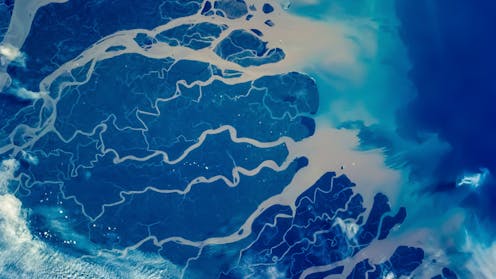The water crisis in the Bangladesh delta has reached alarming levels, according to a recent analysis conducted by a team of researchers, including Md Sarwar Hossain. The study reveals that four out of ten major rivers in the region, including the Ganges and Old Brahmaputra, are falling below their “safe operating space.” This indicates that their water flow is insufficient to sustain the vital ecological and social systems that depend on them, jeopardizing the livelihoods of millions.
The analysis highlights that the remaining rivers are also nearing critical thresholds due to factors such as hydropower dam construction and increased agricultural irrigation. The situation not only threatens water and food supplies but also places pressure on the fishing industry and other livelihoods tied to these waterways.
Impact of Reduced Water Flow
The concept of “safe operating space” was first introduced by researchers at Stockholm University in 2009, outlining boundaries that are crucial for maintaining planetary health. A recent update indicates that six out of nine planetary boundaries have already been breached. In the context of Bangladesh, which is home to approximately 170 million people, this analysis serves as a warning about the pressing need for sustainable management of its river systems.
Over the past three decades, river flows in the Bangladesh delta have diminished during all seasons except winter. Alarmingly, no river in this delta currently operates within its safe limits. Although a water-sharing agreement between India and Bangladesh was established in 1996, the Ganges River continues to suffer from reduced flow, impacting both people and wildlife.
The decline in water levels has led to the extinction of species like the Hilsha fish in certain upper reaches of the Ganges. This fish contributes around 12% to Bangladesh’s national fish production. Additionally, the construction of the Farakka Barrage in India has raised salinity levels in the Gorai River, disrupting the delicate balance of salt and freshwater that supports local fisheries and agriculture.
Challenges and Solutions
The adverse effects of decreased water flow include significant threats to the world’s largest intertidal mangrove forest, which plays a crucial role in maintaining regional climate stability. The degradation of this forest could release large amounts of stored carbon into the atmosphere, exacerbating climate change and further impacting the Himalayan glacier melt.
Addressing these challenges requires comprehensive cooperation across national borders. Successful management of shared rivers necessitates international treaties that prioritize ecological health and equitable resource distribution. The experience of the Mekong River Commission, which involves Cambodia, Laos, Thailand, and Vietnam, may provide a valuable model for establishing similar agreements for the Ganges and other rivers in the region.
Innovative solutions like tax-based water sharing could help resolve disputes over water allocation among countries. By implementing a system where nations utilizing more water contribute additional taxes, revenue could be redistributed to support sustainable practices among all river-sharing nations.
Moreover, efforts to reduce deforestation, diversify land use, and restore wetlands may enhance resilience against flooding and drought, ultimately securing water security for the Bangladesh delta.
In conclusion, the ongoing crisis in the Bangladesh delta underscores the urgent need for collaborative and sustainable water management strategies. Ensuring a safe operating space for the region’s rivers is vital for the future well-being of its people and ecosystems.






























































